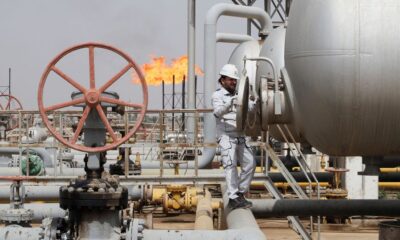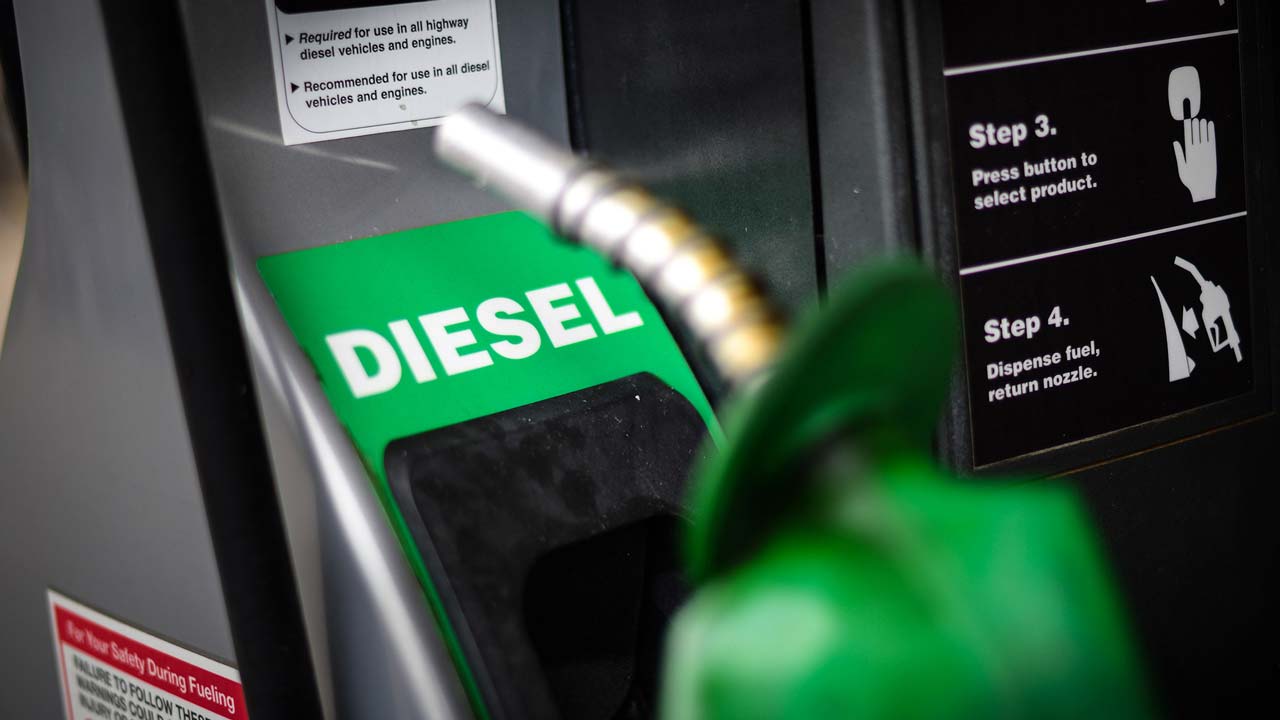Central banks around the world have gone full Bon Jovi handing out some monetary policy bad medicine over the past 24 hours, as the fight against inflation permeates even the most ardent fence-sitters. South Korea and New Zealand hiked by 0.50% yesterday, with Canada weighing in with a crowd-pleaser sized 1.0% hike. You’re getting that bad medicine, whether you need it or not.
This morning, the Monetary Authority of Singapore weighed in with its second unscheduled tightening of the year, recentring the policy band for the currency to “prevailing rates.” The MAS normally only announces monetary policy settings twice a year in April and October. So far it has reacted in January, April and now July, as core inflation surged. We can reasonably assume October will be a live meeting as well. USD/SGD has slumped by 0.67% to 1.3905 in response. For non-Singapore readers, the MAS uses the currency to manage monetary policy because of the nature of trade flows through the city-state. A google of “MAS” and “NEER” will allow you to do your own research on the mechanism. I recommend wrapping a cold towel around your head as you do.
In breaking news, the Philippines Central Bank has just announced an unscheduled rate hike of 0.75% to 3.25%. To say this is an unusual move by the Bangko Sentral ng Pilipinas (BSP) is an understatement, given that they have been amongst the most dovish and reluctant hikers in Asia. The US CPI and the MAS move today, along with the relentless pressure on the Philippines Peso (PHP) have swayed BSP’s hand, underling the pressures facing Asian central banks now. USD/PHP has fallen by 0.32% to 56.06, but the PHP remains near record lows. We may see more of this from other monetary authorities in the region now as pain thresholds and the burning through of forex reserves reaches their pain points. Bank Indonesia could be the next taxi off the rank, followed by Bank Negara Malaysia.
With even the Bank of England sounding hawkish this week and recent rate hikes in Eastern Europe and Latin America, it is clear that central banks around the world are laser-focused on fighting the entrenched inflation they helped to create, growth-be-damned. Higher rates are coming to a corner shop near you.
That brings us to the Big Kahuna, the US Federal Reserve whose FOMC policymakers meet at the end of the month. Overnight, US inflation surprised markets by surging higher to 9.10% YoY for June, with a 0.10% fall by core inflation to 5.90% cold comfort. Futures markets have raced to price in a more aggressive Fed Funds rate hike at the end of the month, approaching 1.0% overnight. At least one Fed speaker – there were many – mentioned 1.0% overnight as well. I still think it is a bridge too far for the FOMC to go 1.0%, but hey, it’s 2022 and nothing should surprise us anymore.
Unsurprisingly, EUR/USD traded down to parity after the data, but after toughing 0.9998, it rallied back to 1.0040. We saw similar price action in GBP/USD, AUD/USD, NZD/USD, USD/CAD, and USD/CHF as well, although USD/JPY went directly to jail and rose to 138.00. The surprises continued; Wall Street fell overnight, but only modestly so in the context of recent volatility. Gold and Bitcoin dropped as well, but actually finished higher on the day. Oil prices didn’t move, shrugging off a huge rise in official crude inventories as well. The biggest head-scratcher for me was the US bond market. The US 2-year yield rose slightly, but yields fell across the rest of the curve. The US yield curve is now well and truly inverted from two years to thirty years.
So, US markets are pricing in faster Fed tightening, and a recession is on the way imminently. Ever optimistic, US markets seem to be pricing in that the Fed will deliver its bad medicine, and send the US into a recession, but it will be short-lived, and the Fed will be cutting rates by H2 2023. That probably plays with the market’s inbuilt psychological need to find reasons to look to be piling back into equities again this year. That’s a lot of faith to place in the Fed, inbuilt market biases aside. Given their track record on inflation in the past two years, that is a looooootttttt of faith to place in the Fed.
That said, given the mess the Fed has made with the transitory/entrenched inflation narrative, it’s just as easy to assume they will make a dog’s breakfast of tightening as well. The US inflation numbers overnight should have seen bond yields and the US Dollar shoot higher, equities should have been stretchered off with a season-ending injury, and gold and cryptos should have headed so far south, that they found themselves in Mexico. Not that has happened, the opposite in fact. One must respect the price action and right now seems to be yelling that a bear market correction is on the way for equities and that the US Dollar rally is about to take a pause for breath. That is in line with a number of overbought/oversold technical indicators I am seeing across asset classes and helped along by the rest of the central bank world ex-Europe and China, seemingly rushing to play monetary catchup.
Yesterday, China’s June Trade Balance printed a monster $98.0 billion surplus, well above forecasts. Whether it is due to a clearing of export backlogs, or that things in China and the rest of the world aren’t as bad as they seem, I know not. It does suggest there is upside potential for the China data dump tomorrow in my opinion. If we are talking about bear market rallies, a healthy set of very important data releases tomorrow from China could be the catalyst to give that some momentum.
The Monetary Authority of Singapore and the Reserve Bank of Australia will be sharpening their tightening pencils today, despite the MAS action this morning. Singapore’s Advanced GDP for Q2 YoY surprised to the upside, rising by 4.80%. That comes after healthy retail sales data earlier in July and upgraded inflation assessments by the MAS this morning.
Over in the lucky country, the economic temperature needle rose to overheated territory today. Australian Employment for June rose by 88,400 jobs, well above the 30,000 forecasts, and follows excellent numbers in May. Healthy gains were made in both full-time and part-time jobs. An elevated CPI release on the 27th of July will lock and load another 0.50% hike in early August by the RBA, perhaps 0.75% if the FOMC goes 1.0% a few days before. The fact that AUD/USD remains near one-year lows is even more surprising in this context, although the AUD is driven by international investor sentiment these days, and the slump in energy, industrial and agricultural commodity prices over the past six weeks means that Australia’s terms of trade are probably going to soften in Q3.
On the subject of agricultural commodities, Turkey and the United Nations appear to have pulled off a miracle and are on the verge of brokering a deal between Russia and Ukraine allowing Ukrainian agricultural exports to partially resume from the Black Sea. That may put downward pressure on soft commodity futures in the short-term, although any impact from Ukrainian exports will have a substantial time lag, and quite frankly, to say it would have implementation challenges is an understatement.
That will be of limited solace to Europe, with emerging markets being the most likely immediate beneficiaries, and rightly so. Europe watchers should circle the 21/22nd of July in their calendars. Russian annual maintenance on the Nord Stream 1 gas pipeline to Germany finished that day, and the Canadians have given the Russians back their pipeline pump. The question is whether the gas starts flowing again. If it doesn’t EUR/USD at 1.0000 will be but a memory and there will be no bear market rally for European asset markets.
Looking through the rest of the day, the Japan 20-year JGB auction and Industrial Production data is unlikely to move the needle. India releases WPI Inflation for June this afternoon, and if it stays around 15.80% or higher, the pressure on the Rupee, local equities, and the Reserve Bank of India is set to continue. Europe’s releases are second tier this afternoon, and US PPI this evening will have been drowned in the noise of the overnight inflation data.
All roads lead to China’s data dump tomorrow, featuring GDP, retail sales and industrial production amongst others. That is followed by heavyweight retail sales and consumer sentiment data from the US.
Asian equities tread water.
Given the scale of the rise in headline inflation from the US overnight, US equities were remarkably resilient, perhaps helped by core inflation easing slightly. Wall Street finished lower, but on another week, if we had seen data like that from the US, Wall Street would have been rushing for the exit door. The resilience of Wall Street implies that US equities markets could be set for a bear market rally, especially if the US yield curve continues to move lower and the inversion deepens. Longer-term, none of what I have outlined above will be a constructive environment for equity markets. US earnings season gets underway properly today as well, with JP Morgan and Morgan Stanley announcing. Investment banking revenue will have fallen, but more interesting, will be their economic outlook for the rest of the year.
Overnight, and post-CPI, Wall Street fell, with the S&P 500 closing 0.45% lower. The Nasdaq was impressively solid, falling just 0.15%, while the value-centric Dow Jones underperformed, falling by 0.67%. In Asia, Us futures are holding steady. S&P 500 and Dow futures are unchanged, while Nasdaq futures have gained 0.25%.
A lack of panic from Wall Street sees Asia stock markets treading water today, erring from unchanged to modestly higher. The Nikkei 225 has risen by 0.75% today, boosted by a weaker Yen overnight and falling oil prices this week. South Korea’s Kospi has edged 0.10% higher. Impressive trade data yesterday continues to lift China markets. The Shanghai Composite is 0.30% higher, with the CSI 300 rising by 0.50%, and the Hang Seng gaining 0.30%.
In regional markets, Singapore is 0.70% lower after the MAS unexpectedly tightened monetary policy today. Taipei has jumped 0.80% higher, with Kuala Lumpur adding 0.15%, and Jakarta rising by 0.30%. Bangkok is unchanged, but Manila has tumbled by 1.30% after the BSP weighed in with their own rate hike this morning. Australian markets are higher today on impressive employment data, the ASX 200 gaining 0.40%, and the All ordinaries rallying by 0.60%.
Europe had another torrid day as energy concerns persisted as the Eurozone wilts under a heat wave. Progress in the Ukraine/Russia agricultural export negotiations may give Europe more hopes that Russia won’t switch off the gas from the 21st of July. As such and given the performance of Asia and US markets overnight, I expect Europe to post a positive opening this afternoon.
US Dollar consolidates.
Currency markets had another choppy overnight session, which ultimately ended up sideways again, despite US inflation unexpectedly rising. EUR/USD traded to parity but managed to finish higher at 1.0040, a pattern repeated across most major currencies. With the US Dollar looking overbought on short-term indicators as well, I suspect that the odds of a US Dollar correction lower have risen sharply, especially as Asian central banks and others have rushed to tighten monetary policy this week. I could see the correction persisting in some shape or form until the FOMC meeting later this month.
The dollar index traded in a 100-point 107.50 to 108.50 range overnight but ultimately finished just 0.13% lower at 108.02. It has risen by 0.23% to 108.27 in Asia, led by a much weaker Japanese Yen. Resistance is at 108.50 and 110.00. Support is at 107.50 and then the 1.0585 breakout point, followed by 1.0500. The relative strength index indicator (RSI) is overbought, signalling a potential correction lower by the US Dollar.
EUR/USD traded through 1.0000 to 0.9998 overnight, but held this level once again, and rose back to finish the day 0.21% higher at 1.0058. In Asia, it has eased to 1.0035. A clean break of 1.0000 is likely to trigger a sharp move lower as stop-losses and algos kick in, but it is significant that it has held this level for two days in a row, although its rallies have been limited. The oversold RSI and underwhelming post-inflation performance by the US Dollar suggests Euro could be tracing out a low for now and a correction back towards 1.0200 is possible. EUR/USD has support at 1.0000 and then 9900/25. It has resistance at 1.1020, the overnight high, and then 1.0200.
GBP/USD traded as high as 1.1965 overnight before closing unchanged at 1.1890. It has fallen to 1.1870 in Asia but looks to be trying to trace out a temporary low at 1.1800, which is initial support. Resistance is at 1.1965 and then 1.2060 and 1.2200.
USD/JPY continued rallying overnight as US short-dated yields rose, finishing 0.41% higher at 137.45. In Asia, USD/JPY has continued rallying quite aggressively, rising 0.44% to 138.05. With a procession of central banks capitulating and hiking rates aggressively in the past 24 hours, Japan’s super-easy policy leaves it an outlier and that seems to be weighing on the yen. USD/JPY’s next resistance is at 140.00, with support at 136.00, 134.25 and 132.00. I expect the “watching markets closely” noise to increase from Tokyo today and being long above 138.00 could be a dangerous trade in the shorter term.
AUD/USD was unchanged at 0.6755 overnight, quite the surprise, given the US inflation data and another reason to think a greenback correction lower is imminent. In Asia, super-strong employment data had lifted rate hike expectations and pushed AUD/USD 0.30% higher to 0.6775. It also looks like some decent AUD/JPY buying is going through. It has r,esistance at 0.6800 and 0.6850, with support between 0.6700 and 0.6730. NZD/USD is unchanged at 0.6130 again today, suggesting increased downside risks post the RBNZ yesterday. AUD/NZD buying post the Australian data is also capping NZD/USD gains.
Asian currencies ranged overnight once again and have edged lower in Asia as some US Dollar strength had returned. Overall, though, the response by Asian FX has been relatively muted post the US data and the moves seen by the MAS and BSP this morning. That said, USD/MYR continues to creep closer to 4.4500, USD/IDR to 15,000.00 and USD/INR and USD/KRW remain close to recent highs. The SGD and PHP have outperformed today as both central banks sprung unscheduled monetary tightening on markets. With South Korea, Singapore and the Philippines tightening this week, the pressure will be increasing on other regional currencies to follow suit as Asian central banks break ranks on inflation. Most notably, the INR, IDR and MYR look the most vulnerable and the recent slump in commodity prices will be another headwind for Indonesia and Malaysia.
Oil markets remain a bastion of calm.
I never thought I would say oil markets and bastion of calm in one sentence, but it is 2022, and anything is possible. Despite the noise seen in other asset classes from US data and central bank moves, oil was almost unchanged overnight. The US data and moves by Canada, Singapore et al to tighten policy should have been a headwind for oil. Most especially, the huge rises in the API and official Crude Inventories this week, as well as refined products, should also have seen oil move lower.
Instead, Brent crude finished 0.60% higher at $99.65 a barrel, rising 0.45% to $100.10 in Asia. WTI held its 200-day moving average (DMA), and finished 0.85% higher at $96.35 a barrel overnight, gaining 0.35% to 96.70 in Asia. Given the scale of the selloff on Tuesday, and the plethora of negative price indicators over the past 24 hours, and an ugly technical picture, the fact that oil has been steady for 36 hours suggests that the worst of the sell-off is over for now. Risks are rising that oil stages a corrective rally carrying both contracts back above $100.00 a barrel once again.
Brent crude has resistance at $101.00, and then 104.00 a barrel, followed by a now distant $106.00 a barrel. It has nearby support at $98.40, followed by the much more important 200-day moving average (DMA) at $96.90 a barrel. Consecutive daily closes below the 200-DMA will force a reassessment by me, perhaps meaning that the backwardation of the futures curves moves lower with spot prices but remain in backwardation. A sort-off hawkish easing if you like.
WTI tested its 200-DMA at $94.00 a barrel overnight but managed to rally from there. That forms initial support, followed by $93.00 a barrel. Resistance is at $98.00, followed by 101.00 a barrel.
Even gold looks resilient.
Gold fell quite heavily on the high US inflation data prints overnight but managed to recover all those losses and close higher on the day. Along with an oversold RSI technical indicator, and in line with my belief that a US Dollar correction is on the way, I believe some short-term relief may also be coming gold’s way, allowing it to rally somewhat.
Gold traded in a near-forty dollar range overnight, trading as low as $1707.00 an ounce post-US-inflation. However, it finished the session 0.55% higher at $1735.50 an ounce. In Asia, some incipient US Dollar strength sees gold ease by 0.30% to $1730.00 an ounce.
Gold appears to be trying to trace out a temporary bottom at the $1707.00 area, with $1700.00 and longer-term support at $1675.00 an ounce looking safe for now. Failure of $1675.00 still signals more pain ahead, though. Gold has resistance at $1745.00, now a double top. That is followed by $1780.00, and $1800.00, its June downward trendline.


 Forex2 weeks ago
Forex2 weeks ago


 Naira2 weeks ago
Naira2 weeks ago
 Billionaire Watch2 weeks ago
Billionaire Watch2 weeks ago




 Naira2 weeks ago
Naira2 weeks ago




 Naira2 weeks ago
Naira2 weeks ago




 Naira4 weeks ago
Naira4 weeks ago


 Naira6 days ago
Naira6 days ago
 Banking Sector4 weeks ago
Banking Sector4 weeks ago

















